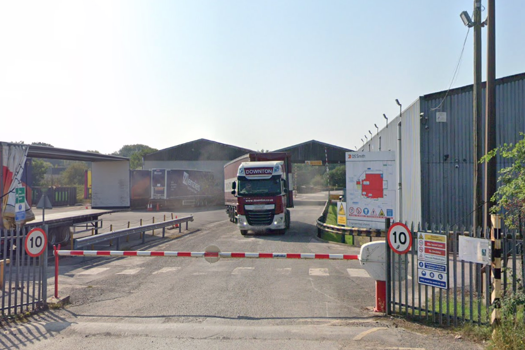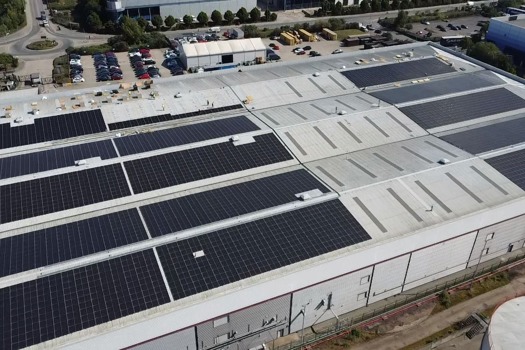Pick a card, any card. Or, in the case of wide-format printing, pick a roll-up banner material, an external poster grade, an internal poster grade, a textile, a self-cling, a self-adhesive, a floor graphic, a wall graphic, perhaps a wallpaper... the list goes on.
One of the great things about wide-format digital print is its versatility. It’s common to hear exponents boast that they can print onto ‘virtually anything’. Yet therein lies a dichotomy. The sheer breadth of possibilities can present too many choices, and the potential for costly mistakes.
Certainly this breadth of possibilities can be daunting. Printers such as Hickling & Squires (see boxout), with its burgeoning wide-format offering, acknowledge that sourcing the most appropriate selection of materials can be "a minefield".
And at a recent Paperlinx ‘Discover Digital’ event, aimed at encouraging commercial printers to explore the potential for wide-format printing, the supplier highlighted the importance of making the right choices when it comes to materials. Under-specify and users may end up losing a customer for the sake of a few pence in the overall cost of the job. But over-specify and materials can end up losing you margin.
So how do printers ensure they’re using the right substrates? "The crux of it is, when a customer asks for a certain product, really exploring what that customer wants to achieve," says Kevin Wheeler, consumables director for digital solutions at Paperlinx.
"The lowest common denominator will be cost. But if you truly understand what the customer wants to achieve, and then work with your supplier of choice to make sure you have the right product options, that’s where real value lies," he adds.
In one respect, the process of narrowing down the choice of materials will begin with the printer’s type of print engine, be it solvent, water-based, UV or latex. After that it’s about finding the right material for specific applications.
With hundreds of different product choices available, suppliers are refining their own offerings to do just that, using a combination of online product selectors and expert staff, on hand to advise where necessary.
Fujifilm Sericol has honed its Euromedia offering to make things as straightforward as possible: "In the beginning we are making things easy for customers by giving things clear names, instead of cryptic codes," says international account manager René Bourgeois.
"Using the website selector people can select a product and an ink type, and it will just show the media that work with that technology. But they can also call the hotline and speak to sales staff who are trained to advise on materials and also applications," he adds.
Antalis is also poised to launch an improved website. "Our new website guides customers through the process of material selection by application or machine type, and we also have a lot of collateral and swatches," says the firm’s sign and display product manager Michael Crook.
Then, after the vendor has made their recommendations, comes the sharp end of production. The key to substrate success lies in printers testing for themselves what works and what doesn’t.
Get it right
Hickling & Squires’ experience in finding the optimum grade for something as seemingly straightforward as a roller banner material shows the wisdom of carrying out tests when it comes to selecting the best material for the job.
Not every material does exactly what it says on the tin, or roll, per the company’s experience with a supposed ‘layflat’ product that was anything but.
"We’ve really learned a lot," says commercial manager Steve Seddon. "From a roller banner point-of view we had three different suppliers in to talk about materials, and they all offered something different. It took us a while before we got the right material, it costs a bit extra but the quality is significantly better and we know our customers will be happy with it."
Super-wide printing specialist Stones Media Digital Printing in Potters Bar, advocates a similar approach. The company can print in widths greater than three metres on its Vutek and Virtu UV printers, and produces posters on blue-back material in large volumes for clients including London Underground. "Each UV machine has different lamps, and different inks, so you’ve got to test things," says Stone.
One high-profile job that involved just that was the flooring for the spectacular London 2012 Olympics opening ceremony. "It was a black gloss, and the minute they tried to print onto it, the ink came straight off," Stone recalls. "They tried three different printers and had the same problem."
"We devised a way of pre-treating the rolls first, so the print stuck," he explains. Thus, Stone was able to produce the 8,000m2 of non-slip flooring required for the ceremony, to the exacting standards required by the Olympic team. "It was an interesting job," says Stone, with no little understatement.
Given how time-consuming such testing can be, it’s unsurprising that many wide-format printers are fans, at least for certain types of jobs, of sticking to what they know. "We tend to stick to materials we know will work properly, and we will recommend those to our clients," says Stone. "You can print onto virtually anything if you profile it correctly, and we can do that, but we charge extra for profiling onto a customer’s own material," he adds.
Antalis’ Crook reports that, as in the case of Hickling & Squires, this often involves over-specifying to make doubly sure a piece of print will be fit for purpose. "Lots of customers use higher-end products, all the time. They are effectively saving on hassle, reprints, and potential complaints that way," he explains. "Saving £10 a roll isn’t necessarily beneficial if you’re going to get a job back and have to re-do it. Fitting is a big issue and that’s where costs can really rack up, if you end up spending £500 a day to get someone to refit it if it falls off."
Crook says this is a good idea where printers need to keep an eye on the bigger picture of installation cost for example. But he says printers must be careful to still remain responsive to the differing requirements of different jobs.
"Everyone is pushing for the best product at the best price. If someone wants 10 roll-up banners for a one-day event, we have a lower-cost product for that sort of application. Whereas if it’s a world tour of an exhibition, we would advise on a better quality product," he says.
Stay creative
And printers should of course stay alive to the exciting creative possibilities being continually introduced to this area of print. Suppliers are united in urging wide-format printers to leave some space in their offering for more unusual and creative applications, even when it comes to day-to-day projects.
"The industry lives on creativity," states Fujifilm Sericol’s Bourgeois, who recommends that printers should showcase different product options at their own facilities, so customers can be made aware of the possibilities.
And with most materials generally available for next-day delivery, this means end-users don’t have to tie up money in stock just in case of demand.
"There’s a huge range of materials, and it gives printers the possibility to do something different. There are so many interesting niche products we supply that are beyond the ordinary," asserts Bourgeois. "Printers should make these options visible to the end-customer – if you don’t show it, you won’t sell it."
CASE STUDY: Hickling & Squires
Hickling & Squires recently invested in expanding its wide-format printing operation, adding new kit from Canon and Epson to its existing Roland equipment.
The Nottingham-based firm produces a range of core products including posters and roller banners, and sources its materials from three suppliers: Paperlinx, Link Media Supplies and A1 CAD.
"We use a certain type of banner material at a specific micron, because we know it prints well and it works well in the stand," explains sales director Simon Lowe. "When we put our new machines in, someone said we were over-specifying our banner material. However, when we tested an alternative, lower-micron material, it began to curl.
"You’ve got to establish whether something is suitable for purpose or not. We wouldn’t switch to a different material without getting the customer to approve it first. If you’d done 100 banners and they were not satisfactory, it would result in one very unhappy customer," adds Lowe.
"We try to keep it simple by focusing on a certain range of products and getting the right grades for those core products, without needing to add complications such as laminating," adds commercial manager Steve Seddon.
"We’ve had material specced in to us as ‘lay-flat’, but the only time it was flat was when it was on the roll! We would be reluctant to go down the route of using a material that curls. With something like a roller banner you’ve got to think about the environment it’s going to be used in, for example a leisure centre that is likely to involve changes of temperature and humidity.
"It took us a while to find the right material, but we haven’t had one complaint."
SUPPLIERS' OWN SPECIALIST MEDIA PICKS
"We’ve found the Dtec optically clear film has opened doors and widened horizons. It’s actually changed the game because the print quality is so exceptional. Window graphics can look a bit cheap and cheerful, whereas with this you can get high-quality print on a window."
Kevin Wheeler, Paperlinx
"Our Excellight backlit material looks the same in both light-on and light-off states. So during opening hours it can have light box illumination, but you still have a photo-realistic image when the lights are off."
René Bourgeois, Fujifilm Sericol
"There is a fabric revolution underway – people aren’t as nervous as they once were about getting the sewing machine out. New products coming through include a backlit fabric for tensioning into systems rather than using an acrylic or banner PVC."
Michael Crook, Antalis






